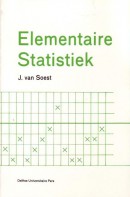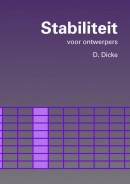Product informatie
- ISBN 9789040719769
- ISBN 10 9040719764
- Druk 1
- Bindwijze Paperback
- Taal Engels
- Uitgever VSSD
- Onderwerp Non-fictie informatief/professioneel algemeen
- Beschikbaar sinds 3 November 2005
Samenvatting
Dynamic data processingThis book is a follow-up on Adjustment theory. It extends the theory to the case of time-varying parameters with an emphasis on their recursive determination. Least-squares estimation will be the leading principle used. A least-squares solution is said to be recursive when the method of computation enables sequential, rather than batch, processing of the measurement data. The recursive equations enable the updating of parameter estimates for new observations without the need to store all past observations. Methods of recursive least-squares estimation are therefore particularly useful for applications in which the time-varying parameters need to be instantly determined. Important examples of such applications can be found in the fields of real-time kinematic positioning, ... navigation and guidance, or multivariate time series analysis. The goal of this book is therefore to convey the necessary knowledge to be able to process sequentially collected measurements for the purpose of estimating time-varying parameters.When determining time-varying parameters from sequentially collected measurement data, one can discriminate between three types of estimation problems: filtering, prediction and smoothing. Filtering aims at the determination of current parameter values, while smoothing and prediction aim at the determination of respectively past and future parameter values. The emphasis in this book will be on recursive least-squares filtering. The theory is worked out for the important case of linear(ized) models. The measurement-update and time-update equations of recursive least-squares are discussed in detail. Models with sequentially collected data, but time-invariant parameters are treated first.In this case only the measurement-update equations apply. State-space models for dynamic systems are discussed so as to include time-varying parameters. This includes their linearization and the construction of the state transition matrix. Elements from the theory of random functions are used to describe the propagation laws for linear dynamic systems. The theory is illustrated by means of many worked out examples. They are drawn from applications such as kinematic positioning, satellite orbit determination and inertial navigation.Contents: Introduction / 1. Least-squares: a review / 2. Recursive least-squares: the static case / 3. Recursive least-squares: the static case / 4. State-space models for dynamic systems / 5. Random functions / 6. Recursive least squares: the dynamic case / Literature / Indexhttp://www.vssd.nl/hlf/a030.htm
Meer boeken van uitgever VSSD
Meer boeken met de onderwerpen Non-fictie informatief/professioneel algemeen
Veel gestelde vragenmeer antwoorden
Hoe werkt Resale.nl?
Je kunt op de website advertentie(s) plaatsen van de boeken die u wilt verkopen. Een potentiële koper neemt dan contact met je op om samen een prijs af te spreken en de transactie verder af te handelen. Houdt hierbij onze aanbevelingen voor een veilige transactie in gedachten en voorkomt dat je slachtoffer wordt van oplichting.
Hoe kom ik in contact met de verkoper?
Je kunt een reactie versturen door bij de betreffende advertentie van de verkoper op de knop ‘doe een bod’ te drukken. Je kunt nu een bod doen op de advertentie en een persoonlijk bericht toevoegen. Het verstuurde bod brengt je in contact met de verkoper via e-mail.
Wat zijn de kosten voor het verkopen van mijn studieboeken?
Je kunt geheel gratis gebruik maken van de diensten van Resale.nl. Resale.nl haalt zijn inkomsten uit advertenties.
Hoe kan ik een boek kopen?
Resale.nl werkt globaal op de volgende manier:
- Zoek via het zoekveld het studieboek dat je wilt kopen.
- Uit de zoekresultaten kies je het studieboek waar je geïnteresseerd in bent.
- Op de detailpagina van het studieboek kun je een overzicht vinden van de personen die het studieboek verkopen.
- Je kunt nu een bod plaatsen door op de button te klikken. Het bod wordt via e-mail aan de verkoper verzonden.
- De verkoper van het studieboek neemt contact met je op door een reactie te geven op het bod dat je hebt verzonden. Met de verkoper kun je gezamenlijk een prijs afspreken. Houdt hierbij onze aanbevelingen voor een veilige overdracht in gedachten en voorkom dat u slachtoffer wordt van oplichting.
Hoe weet ik wat ik koop?
Om te achterhalen of wat je koopt ook daadwerkelijk is wat er wordt geadverteerd is het verstandig om bij de verkoper langs te gaan en het aangebodene te bezichtigen. Doe je dit niet, dan loopt je een zeker risico. Onder het kopje ‘Hoe kan ik de kans op misbruik verkleinen’ kun je meer over dit onderwerp vinden.
Kopers over Resale.nl
bart van gijsel
"Ik ben erg tevreden over deze verkoper de familie thus. Goede snelle levering."
Patrice Michel
"De verkoper heeft er alles aan gedaan om het door mij bestelde product zo snel mogelijk naar mij toe te krijgen. Heeft me van iedere stap op de hoogte ..."
marjolein
"Besteeling snel bezorg, in goede staat net zoals beschrijving en goede communicatie met verkoper!"
marjolein
"Goed contact, snel en in goede orde ontvangen. Staat van het boek was zo goed als nieuw!"
hilda1
"goede medewerking en hulp dank u wel"
Tineke
"Het bestelde werd netjes en snel afgeleverd. De prijs was goed."
stacy
"Goed verpaktBoek ziet er mooi uit"
elisa
"Goede levering alleen jammer dat er niet bij was gezet dat er al in geschreven was"
Elly
"Verkoper reageerde snel op mijn emails en heeft ook het boek snel opgestuurd.Het boek was niet van nieuw te onderscheiden. Was waarschijnlijk niet gebruikt. ..."
Gerard+[2]
"Prettig contact gehad en goed zaken kunnen doen."
















